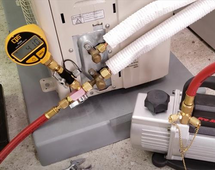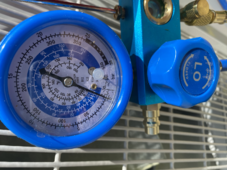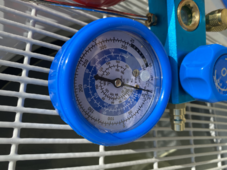HowshouldIknow
New Member
Hello group, I purchased two Hessaire 12k mini-splits. I installed one mini-split, and vacuumed the line set to minus 30 as directed. No problems. After installing the second 12k unit, I tried to vacuum the line set to minus 30 but the gauge only reads minus 15. I repeated the vacuum over 5 times. Left the vacuum run for up to three hours with no movement in the gauge. The arrow continues to point to minus 15. I contacted Hessaire customer service and was told there may be a leak in the line set couplers. We checked the line set couplers and did not find any leak. The pump with gauges I used is a new unit, 1/3 hp, purchased off Amazon. The pump was successfully used to vacuum the first of two mini-split line sets. I filled the pump with the proper amount of oil. The pump blows white smoke while trying to vacuum the line. Is that normal? Does anyone know? Any suggestions on what the problem could be? We can't vacuum the second line set to minus 30.






